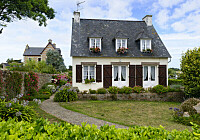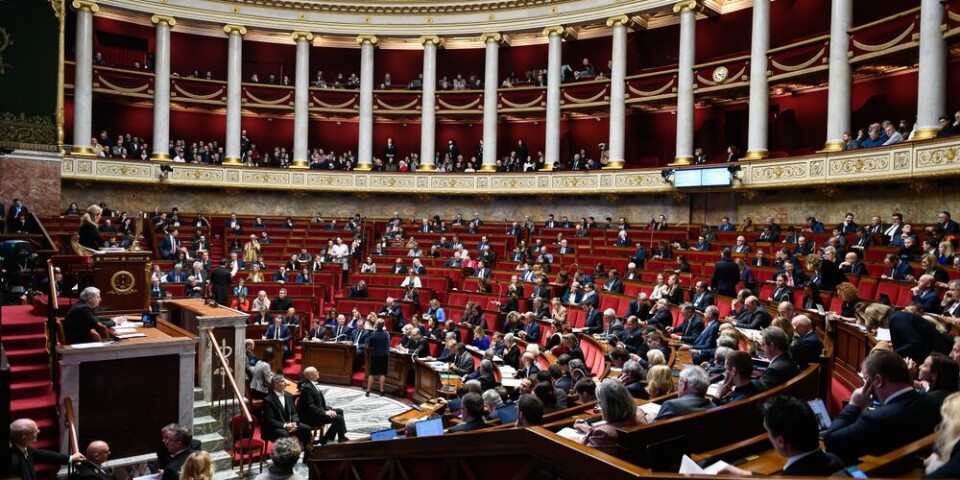How much do flats and houses rent for in your area of France? See official data
An interactive map allows you to check at commune level
Residents across France can research local rental rates using the cartes des loyers
Andrii Yalanskyi | Shutterstock
A series of maps allowing people to check the average rent prices of houses and flats in every commune of France has been published since 2018 - and these have now been updated with official data for 2024.
The carte des loyers (rent maps) project is based on government research partnerships with property sites SeLoger and LeBonCoin.
The aim is to offer a transparent method of calculating and comparing rent rates for flats and houses nationwide.
The average price of rent in France last year was €723 per month, working out at €17.03 per m². This is a 3.3% increase from 2023, reports LocService.
These figures blur disparities between rural areas and major cities. In Paris, for example, indicated rental rates are 164% more expensive than the national average.
We review how you can use interactive maps to check rental rates in your commune and see where the most and least expensive places are to rent in France.
Read also: MAPS: How rent prices vary between France’s major cities
What information does the rent map contain?
The rent map features a set of rent indicators expressed in euros per m² for each commune.
Separate maps distinguish between flats/apartments and houses. For flat prices, the rent is split into further categories: smaller T1-T2 flats (studios or one-bedroom properties) and larger T3 ones (properties with two-bedrooms or more).
Rent prices are shown charges comprises (including additional rental charges to be paid by tenants, such as: energy costs, household waste collection tax, repairing communal facilities).
The map only concerns unfurnished rentals.
The current indicators relate to the third quarter of 2024 and cover all of France.
How can I compare rent prices in my commune?
The rent maps can be found at this government website.
Here, you will find images of four maps relevant to different property types: flats, T1-T2 flats, T3 (and above) flats, and houses.
Identify the type of property you are interested in researching and click on the blue button located under the left corner of the map that says: Retrouvez le détail de la carte (Find out more about the map).
This will take you to the Observatoire des Territoires site.
Here, you can use the interactive map to zoom into your chosen commune.
Then, hover your mouse over the selected area to see the rent price per m².
Information can also be filtered or viewed as a table.
What are the most expensive communes?
Rent prices are most expensive in Paris and the surrounding communes, as well as in the department of Ain (in the east of France), and in Alpes-Maritimes (in the south-east of France).
Rates can be broken into separate property categories as follows:
Flats (all types)
Neuilly-sur-Seine (Hauts-de-Seine), €33.8 per m²
Paris, €31.3 per m²
Saint-Mandé (Val-de-Marne), €30.6 per m²
Levallois-Perret (Hauts-de-Seine), €30.3 per m²
Beausoleil (Alpes-Maritimes) €30.0 per m²
T1-T2 flats
Neuilly-sur-Seine (Hauts-de-Seine), €36.1 per m²
Ferney-Voltaire (Ain), €35.4 per m²
Versonnex (Ain), €34.9 per m²
Ornex (Ain), €34.6 per m²
Paris, €33.2 per m²
T3 (and above) flats
Neuilly-sur-Seine (Hauts-de-Seine), €33.5 per m²
Cap-d’Ail (Alpes-Maritimes), €32.1 per m²
Beausoleil (Alpes-Maritimes), €30.8 per m²
Paris, €30.8 per m²
Levallois-Perret (Hauts-de-Seine), €30.7 per m²
Houses
Boulogne-Billancourt (Hauts-de-Seine), €29.3 per m²
Le Vésinet (Yvelines), €27.6 per m²
Malakoff (Hauts-de-Seine), €27.1 per m²
Vanves, (Hauts-de-Seine), €27.1 per m²
Divonne-les-Bains (Ain), €27.0 per m²
Read also: Check your rent is not too high’: Mixed reaction to new Paris poster
What are the least expensive communes?
The majority of communes where rent is least expensive are found in the north-east of the country, but can be broken into the separate property categories as follows:
Flats (all types)
A total of 44 communes indicate a rent price of €5.9 per m².
42 of these communes are located in the department of Côte-d'Or (in north-east France), while the remaining two are in Yonne (in north-central France).
T1-T2 flats
A total of 57 communes show a rent price of €7.4 per m².
30 of these communes are found in the department of Côte-d'Or, 15 communes are in Haute-Marne, and 12 are located in the department of Aube.
T3 (and above) flats
Champlitte (Haute-Saône) is the least expensive commune for T3 properties, with a rental rate of €5.3 per m².
Areas with a rent price of €5.4 per m² are:
24 communes located in the department of Côte-d'Or
12 communes located in the department of Haute-Marne
19 communes located in the department of Haute-Saône
29 communes located in the department of Yonne
Houses
A total of 46 communes (all in the Haute-Marne department) display a rent price of €5.3 per m², including Ageville, Briaucourt, Clinchamp, Thivet, and Verbiesles.
Read also: A guide to renting a flat or house in France: 14 questions
How is rent information gathered?
The Directorate-General for Planning, Housing and Nature (DGALN) launched the ‘rent map’ project in 2018, in partnership with an economics research team from Agrosup Dijon and the National Institute for Agricultural Research (INRAE).
In 2020, the project was taken over by the National Agency for Housing Information (ANIL).
These government research groups partner with property sites SeLoger and LeBonCoin every year, enabling access to up-to-date knowledge of rent prices to create a database containing 9.9 million rental adverts.
Using this data, the research team developed a way of estimating rent prices. The rent indicators are therefore based on predicted rents.
Rent prices are estimated using the listed characteristics of the advertised properties, such as surface area, the date that the advert was published, and the location of the property.
Read also: Landlords in France can now increase rent for some tenants: when and by how much?





























